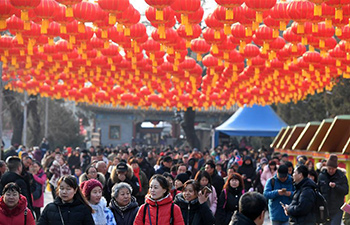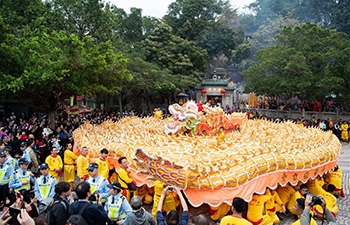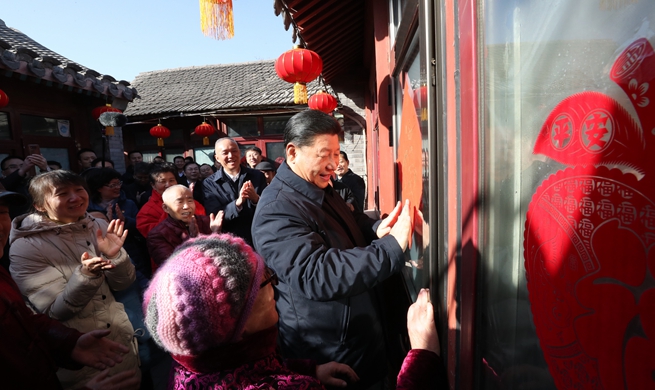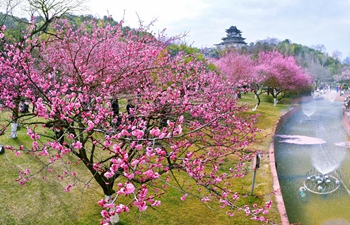XINING, Feb. 6 (Xinhua) -- Every night around midnight, Yu Benfan hears the long whistle of a passenger train from Lhasa as it whooshes through Wangkun station, comforting him and his fellow workers.
Just before dawn, not far from Chumar River station in the hinterland of the Kunlun Mountains, incessant howls mingle with noises from the roaring machines. Yu, deputy director of the Wangkun Line maintenance workshop in Golmud section, stepped up his work with others during the morning maintenance gap.
Yu is on duty during this year's Spring Festival for the eighth time in 13 years.
With an average age of 35, Yu and his 21 male colleagues are responsible for the maintenance of 116 kilometers of track along the Qinghai-Tibet Railway, including the 11.7-km Qingshuihe (Clear Water River) Bridge that co-functions as a tunnel on frozen earth at Hoh Xil nature reserve.
"The primary task of track maintenance workers is to make prompt repairs to the uneven rails," Yu said. "Changes in temperature, humidity and other meteorological factors must be closely monitored."
Extreme living conditions are by no means easy to adapt to. The place where they work has an average elevation of over 4,500 meters, with oxygen levels likely to be 55 percent lower than other plain areas.
The uninhabited land lives up to its name.
Influenced by his father, who relocated his family from central China's Henan Province to Qinghai decades ago in support of railway construction, Yu studied civil engineering and decided to work as a maintenance worker after graduation.
When he came up to the mountains in 2006, Yu tried to grow vegetables and green plants in a washbasin, none of which survived for even three days. There was a time when he thought about quitting, but he stuck it out.
Their food and drinking water are delivered every 10 days from Golmud.
The tracks usually become uneven in winter, as frozen earth is squeezed when trains pass by. To make the trains run smoothly and ensure passenger safety, Yu and his workmates have to measure the height difference between the rails on both sides and pry them open.
After that, they lift the track with its sleeper, using a 25-kilogram rail jack. The rails get leveled after shimming off the frost.
"It's a rather precise operation despite the heavy tools. Gauge errors are in millimeters," he said as his teeth chattered in the cold.
The maintenance work is quite physical. On one occasion, a sudden heavy snowfall hit the area near Kunlun Mountain station. The staff rushed to repair the snow-covered rails overnight and were stationed at the scene for three days.
The temperature dropped to minus 10 degrees Centigrade at night, and they stayed in the car, huddling together for warmth.
The Qinghai-Tibet Railway spans 1,956 km from Xining in Qinghai Province, to Lhasa, capital of Tibet Autonomous Region. Opened in 2006, the highest railway in the world has been lauded as an engineering feat for covering harsh terrain and frozen ground.
"It's an exceptionally tough road, but it's safe to station there," said an engine driver who runs on the line, expressing his appreciation for reliable young men like Yu.

















